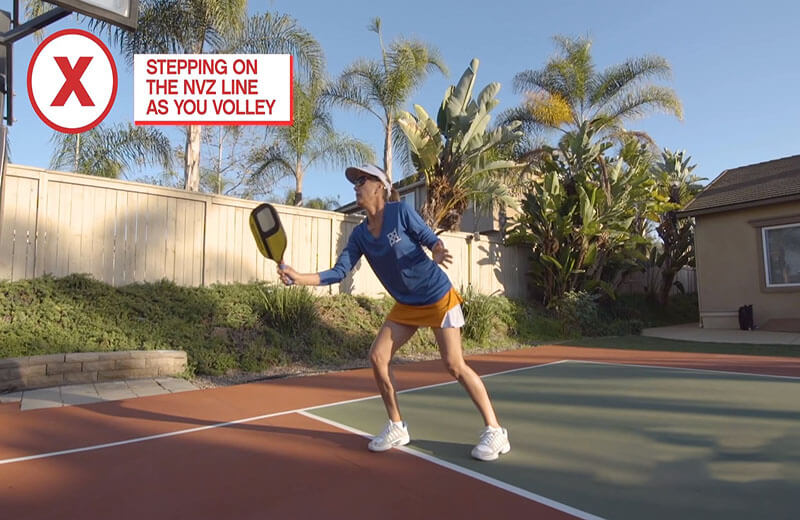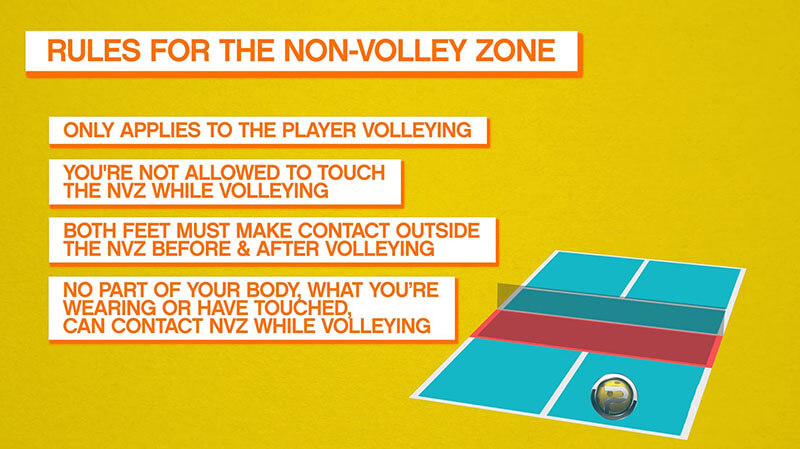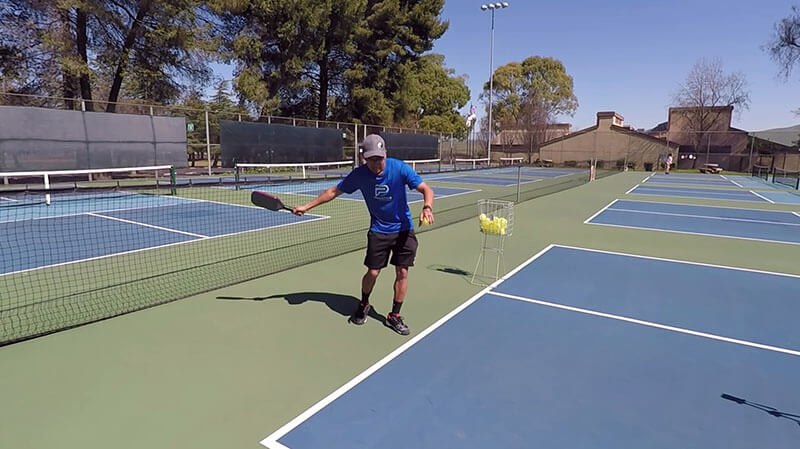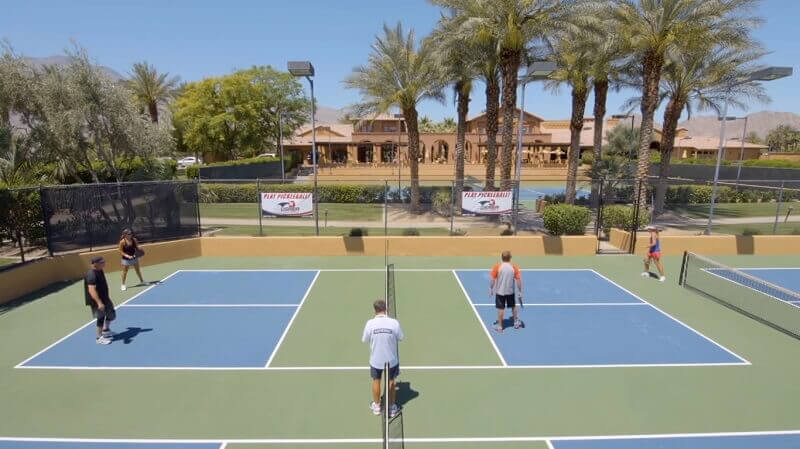What is a Fault in Pickleball?
Literal meanings of ‘fault’ are a flaw, defect, or imperfection. In terms of a pickleball game, a fault is made by a player when they miss a ball or violates the rules of pickleball. The rally continues until a fault is made.
Once a team or a player makes a fault they either lose a point or lose the serve. To further clarify the rule, consider this;
- If the serving team commits a fault, they lose their serve but don’t lose any points.
- If the receiving team commits a fault, they lose a point while the serving team is given one point.
Common Pickleball Faults
There are five common faults that every pickleball player must be aware of;
- Hitting the ball on the pickleball net – This is pretty self-explanatory; hitting the ball on a net will be the fault of the player who hit it.
- Out-of-bound hits – If a ball goes outside the boundary line of the pickleball court, you must not hit it. Otherwise, it would be considered a fault.
- Fault in the non-volley zone: Hitting a volley in the non-volley zone is not allowed and will be considered a fault.
- Double Bounce Fault – If you don’t stick to the double bounce rule of pickleball, it will be considered a fault.
- Hitting a Permanent Object – If a ball hits any permanent object (any item outside the court area), the team who made the hit will lose a point or service due to the fault.
Pickleball Faults You Could Make
If you are unaware of the pickleball faults, you might be making many mistakes. Below, we have described some of the faults that you might be making in detail;
Pickleball Foot Faults
Foot faults can occur in two situations in pickleball;
- In the Non-Volley Zone – If your feet are in the non-volley zone and you hit a volley, it will be a fault. It is also considered a foot fault if the feet of the player are on the non-volley zone line
- During a Serve – If the server’s feet touch any part of the court or are outside the bounds of a sideline, it will be considered a fault.
Players have to consider a lot of things while playing the game. Thus, they often forget about their foot movement and unintentionally step on the non-volley line.
A lot of beginners and intermediate players alike, often make this mistake. To avoid the first foot fault, stay away from the kitchen or non-volley zone. Stay close to the kitchen line and wait for the ball to bounce.
To avoid the second foot fault, practice the serve while standing in one position. This position must be outside the court and within both sidelines.
By deliberately paying attention and practicing the services in this position, you won’t make a foot fault unconsciously.
Pickleball Line Faults
There are four main lines in a pickleball game;
- Baselines
- Sidelines
- Non-volley lines
- Center lines
Read more: “Stay in the Court: Understanding Pickleball Line Rules“
Most players don’t play the game mindfully and lose focus on the lines. One of the most common faults you might be making is playing a ball that’s out of the lines.
In the case of serving, you must be standing outside the baseline, aligned with the centerline, and should not go outside the area of the sidelines. If any of these mistakes occur, you might lose a point or serve.s
Another foot fault that we discussed earlier is very common. This fault is caused if you step on the non-volley line. To avoid pickleball line faults, be more mindful of the positioning of the lines.
Pickleball Volley Faults
A volleyed shot is played before the ball hits the ground. This fault implies the violation of pickleball kitchen rules.
Playing a volley shot in the non-volley zone will lead to a fault. Earlier we discussed this fault in detail. If anything the player is wearing touches the non-volley zone, it will also be considered a fault.
While practicing the game, never play in the kitchen zone. By doing this, your mind will subconsciously gravitate away from the non-volley zone in the real game.
Pickleball Serves Fault
In a double pickleball, according to pickleball serving rules, you have to make service by sending the ball to the diagonal court of your opponent. For instance, if you are standing in the right service area, then you have to hit the serve toward the right service area of your opponent.
If the ball does not go to the diagonal court or goes outside the lines of the court, you might lose your serve. If the ball hits the net during a service, it will be considered a fault.
After a serve, both teams have to let the ball bounce before hitting it. This is done till the first two shots. If one team hits the ball before it bounces, it is considered a fault.
Service has rules e.g. standing outside the sidelines. A violation of these rules will be considered a fault.
To avoid service faults, you must practice making serves. We mentioned it before and we’ll say it again; practice is the key to success in any sport.
Who can Call for a Fault on the Court?
Pickleball is a game that appreciates and encourages sportsmanship and fair play. Therefore a player or team who makes mistakes has to call for the fault.
In a non-official game, you don’t have a referee. Your opponent can tell you that you made a fault, but only you or your team member can declare the call for a fault. In case of a dispute, the game can be replayed to check the fault.
In an official game, a referee is present who is responsible for calling out the non-volley zone faults and service foot faults.
What is a Dead Ball?
A dead ball is a pickleball that is no longer in the play, or, the result of any action that stops the rally.
What Causes a Dead Ball?
The following actions can result in a dead ball:
- A fault being made – Any fault committed by a player will result in a dead ball. The ball would be considered dead after the first fault is made e.g. the ball becoming dead after it hits the net and falls to the ground
- Valid Hinder – A valid hinder is anything that may have distracted or halted the game during a rally. It will result in a dead ball and the replay of the point. An example is a stray pickleball rolling into your court. If the hinder call is considered invalid, the player or team loses a point.
- Contact with a permanent object – If the ball makes contact with a permanent object after bouncing, e.g., a bench, it will be considered a dead ball. When this happens, If team A hit the ball and the ball already bounced on team B’s court. Team A will get the point. In contrast, if team A hit the ball and the ball lands on team A’s side, then Team A will lose that point.
Final Words
Faults in pickleball are inevitable but some of these faults can be avoided if you keep on practicing. You must know the rules of pickleball on your fingertips to avoid breaking them.
We tried to explain as many pickleball faults as we could. Go through the details and follow the tips given to avoid them. Let’s rock the game together!
Read more:
- 12 Crucial Pickleball Etiquette: Unwritten Rules





